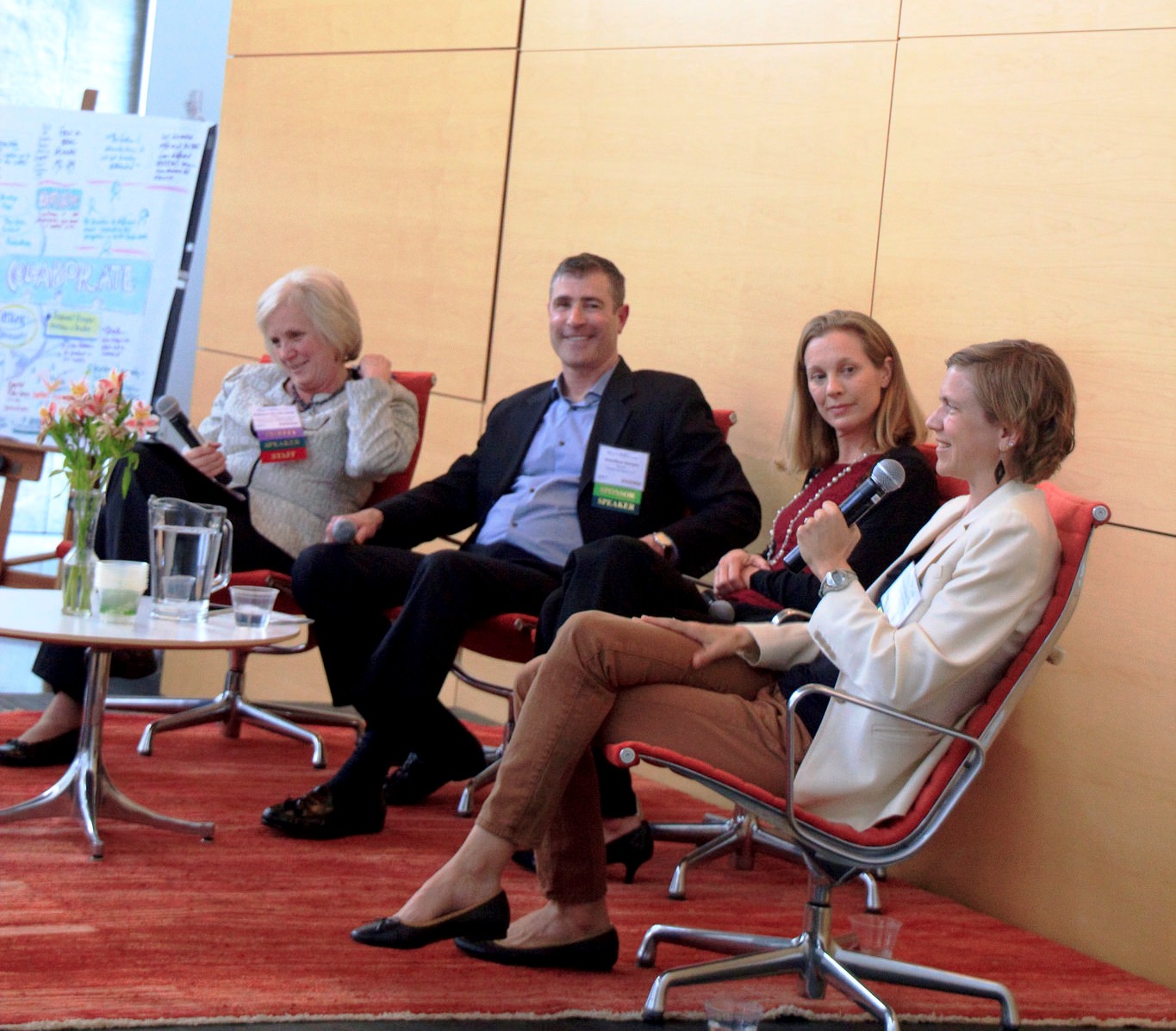4 Skills Leaders Need to Drive Multi-Sector Partnerships

In today’s ever-connected world, driving change requires that impact leaders be effective boundary-crossers, working in partnership with organizations across sectors and industries. Research appears to support this too. According to a recent survey of more than 500 sustainability experts from around the world, multi-sector partnerships will be key to advancing sustainability in the future.
But what does that mean for impact leaders?
If multi-sector partnerships hold the highest potential for creating pivotal shifts in our underlying systems, skills for building these effective partnerships will be increasingly valuable. Liz Maw recently gave the keynote address at the Center for Responsible Business Annual Conference at Mills College. The conference focused on how successful multi-sector partnerships tackle complex social challenges. From that keynote, we’ve created a list of skills we believe impact leaders need to drive these partnerships forward.
Build Trust
An African proverb says, “If you want to go fast, go alone. If you want to go far, go together.” This could not describe multi-sector partnerships more accurately. A multi-sector partnership is a long-haul effort requiring a lot of resources, time, and energy, so the leaders moving these partnerships forward need to trust the process! A lack of trust can sometimes be the biggest barrier to collaboration. The first part stakeholders in a this kind of partnership should focus on is building relationships and trust, so that people can work together on solving community problems. Setting up governance policies early will build trust and reduce opportunities for mistakes and misunderstandings.
Establish a Governance Structure
Managing the expectations of all stakeholders can be the difference between a disastrous partnership and a successful one. All stakeholder need to agree and understand the governance process for the partnership: how success will be measured, what the accountability mechanisms look like, what will be considered confidential, how information will be distributed, what the role of the representatives will be, and any other important procedural guidelines. Also important is a contingency plan. When DevEx asked Sharon D’Agostino, Vice President of Corporate Citizenship at Johnson & Johnson what important lessons she had learned about multi-sector partnerships, she said, “It is important to have an exit strategy to which all parties agree, just in case the partnership fails.”
Be Inclusive
Multi-sector partnerships are based on cooperation rather than competition. In many situations, more effective results are achieved when people come together, pool their resources, and assist one another. The shift is profound. When business works with government as an ally as opposed to a regulatory force and when communities work together with business to solve local challenges, change happens.
The strongest multi-sector partnerships include all stakeholders: the private sector, the public sector, government, and the community. Unfortunately, many multi-sector collaborations do not give community members an equal role in the process. While these partnerships may improve conditions for communities, they don't help them build their own capacity for making change occur.
Communicate, Communicate, Communicate
Like interpersonal relationships, the success of a multi-sector partnership hinges on the ability of all groups to effectively communicate with one another. Effective multi-sector leaders understand that communication is key from the get go.
In multi-sector partnerships, all stakeholders need to agree on what problem they’re trying to solve. Stakeholders may view the problem differently, representing differences in values, cultural perspectives, and other significant factors. It’s important for the group to explore this through discussion in order to build a common understanding of the nature of the problem.
Lastly, multi-sector leaders need to continually seek feedback from the community. The group can conduct open meetings, hold forums, distribute surveys, or use any other method that helps those in the partnership both give people information and get their input. Failing to do so could make community members become suspicious of the process, withhold support, or hinder the efforts of the partnership.
It’s true that multi-sector partnerships require more time, energy, and resources, yet this kind of collaboration is increasingly recognized as vital for entire systems surrounding communities to change. While breaking out of the silos of traditional partnerships can be a challenge, the net benefit is well worth the investment.
